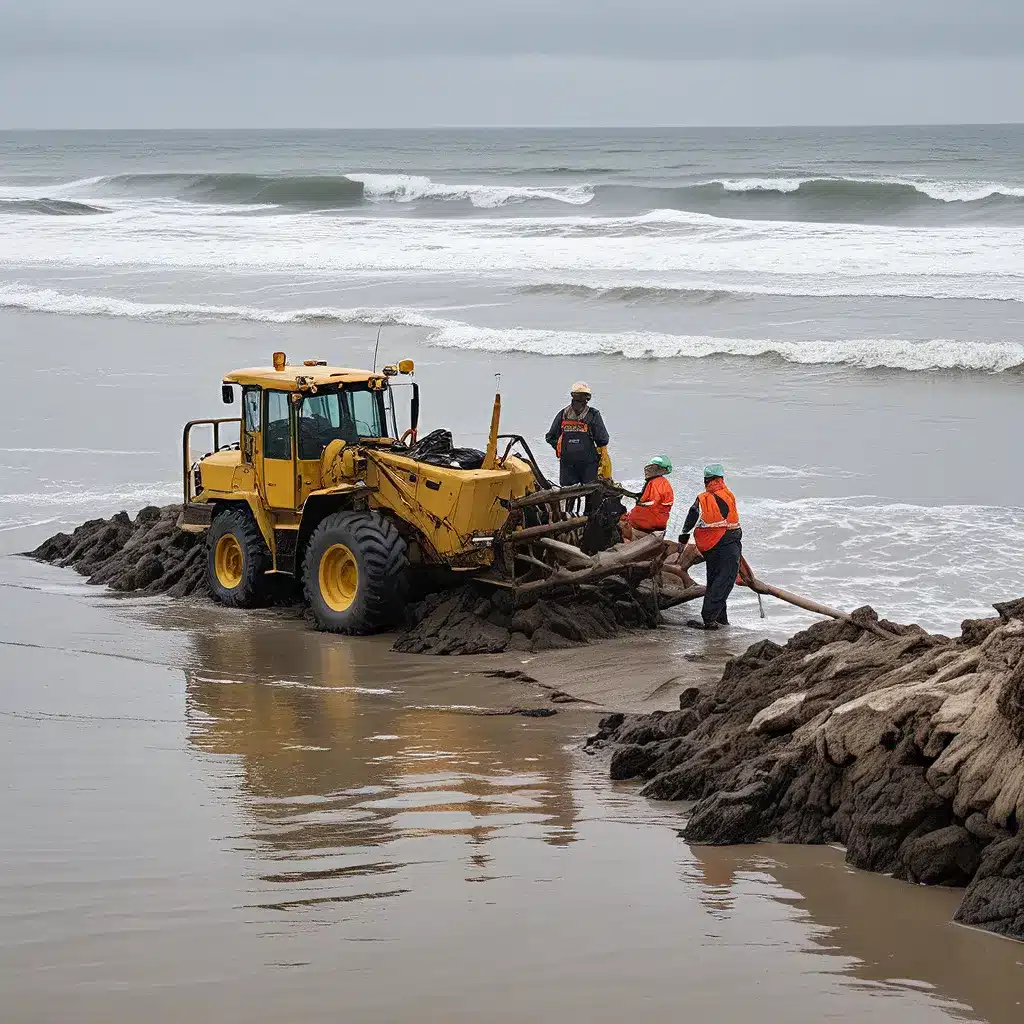
Weathering the Storm: How Environmental Stewardship Can Safeguard Our Communities
As the waves of change crash against our shores, I can’t help but wonder – are we truly prepared to weather the storms that lie ahead? The sobering reality is that our coastlines are facing unprecedented challenges, from rising sea levels to intensifying natural disasters. But what if I told you that the key to enhancing our resilience lies not just in reinforcing our infrastructure, but in embracing the power of environmental stewardship?
Let me take you on a journey through the uncharted waters of coastal adaptation, where environmental services play a crucial role in safeguarding our communities. Dive in with me, and discover how proactive planning and strategic partnerships can help us not only survive, but thrive in the face of these daunting challenges.
Navigating the Shifting Tides: Understanding Coastal Risks
The first step in building resilience is to truly understand the threats we face. As the New Hampshire Department of Environmental Services (NHDES) Coastal Program so eloquently puts it, “Proactive planning and action are essential to ensure that coastal New Hampshire can mitigate and adapt to worsening coastal flood hazards such as sea-level rise, coastal storms, and extreme precipitation.”
Through partnerships and technical assistance, the NHDES Coastal Program is working tirelessly to help state and local decision-makers navigate these treacherous waters. In 2019, they convened a Science and Technical Advisory Panel (STAP) Steering Committee, tasked with updating the state’s coastal flood risk projections and guidance. The result? A comprehensive report detailing the latest insights on relative sea-level rise, coastal storms, groundwater rise, and extreme precipitation – all crucial pieces of the resilience puzzle.
But the work doesn’t stop there. The New Hampshire Coastal Program also collaborates with the New Hampshire Coastal Adaptation Workgroup (NHCAW), a coalition of over 25 organizations dedicated to advancing coastal resilience. Through initiatives like “Setting SAIL” and “Climate Risk in the Seacoast,” they’re providing outreach and technical assistance to help communities prepare for the challenges ahead.
Anchoring Our Future: Environmental Services that Build Resilience
As I survey the landscape, I can’t help but notice the hidden gems that often go unsung – the environmental services that can serve as our lifelines in turbulent times. Let’s take a closer look at some of the ways they can enhance our disaster resilience:
Coastal Landowner Assistance:
The Coastal Landowner Technical Assistance Program (LTAP) is a shining example of how environmental stewardship can empower individuals. Through this partnership between NHDES and the University of New Hampshire, coastal landowners can receive personalized guidance on managing flooding, erosion, and restoration opportunities. By equipping property owners with the knowledge and resources they need, we’re strengthening the resilience of our communities from the ground up.
Beach Monitoring and Data Collection:
The New Hampshire Volunteer Beach Profile Monitoring Program is another impressive initiative, tapping into the power of citizen science. By training volunteers to collect valuable data on beach elevations and erosion patterns, they’re providing municipal and state decision-makers with crucial information to guide beach management and storm surge forecasting. This collaborative approach not only enhances our understanding of coastal processes but also fosters a sense of community stewardship.
Collaborative Adaptation Planning:
The Coastal Program’s work with the Seabrook Hamptons Estuary Alliance and the Hampton Coastal Hazards and Adaptation Team (CHAT) demonstrates the power of interdisciplinary partnerships. By bringing together municipal leaders, commissions, and staff, these efforts are improving coordination and facilitating community-wide adaptation planning. Integrating coastal flood risks into master plans and transportation networks is a testament to the transformative potential of these collaborations.
Innovative Mapping and Visualization:
The New Hampshire Coastal Adaptation Workgroup’s annual photo contest is a brilliant example of how environmental services can raise awareness and inspire action. By capturing the reality of higher-than-normal tides, these powerful images offer a glimpse into the future, reminding us that “what we see today may be our daily reality tomorrow.” And with the support of the Coastal Program, communities are incorporating cutting-edge mapping and visualization tools to better understand and communicate their risks.
Charting a Course for the Future: Navigating the Path Ahead
As I reflect on the diverse range of environmental services at our disposal, I’m struck by the realization that we hold the keys to a more resilient future. By harnessing the power of coastal landowner assistance, citizen science, collaborative planning, and innovative mapping, we can not only mitigate the impacts of rising seas and intensifying storms, but also pave the way for a more sustainable and thriving coastline.
But the journey ahead is not without its challenges. As the Adapting to Rising Tides program so aptly points out, evaluating the effectiveness of our resilience strategies will require a nuanced and multifaceted approach. We must consider not only the physical and ecological impacts, but also the social, economic, and governance-related implications.
And as we navigate these uncharted waters, we must remain vigilant, for the tides of change are ever-shifting. The stories shared by the National Oceanic and Atmospheric Administration (NOAA) demonstrate the power of continued monitoring, data collection, and collaborative decision-making. From visualizing the impacts of sea-level rise to leveraging cutting-edge technology for conservation and restoration efforts, these examples inspire us to think outside the box and embrace the full spectrum of environmental services at our disposal.
So, as we set sail towards a more resilient future, let us remember the wise words of the NHDES Coastal Program: “Proactive planning and action are essential.” By embracing the transformative power of environmental stewardship, we can not only adapt to the tides of change, but also emerge as beacons of hope, guiding our communities to a more secure and sustainable tomorrow.
After all, the future of our coastlines is in our hands. And with the right environmental services as our compass, I have no doubt that we can weather any storm that comes our way. The time to act is now, and the Inland Waters Inc. team is here to support you every step of the way.


